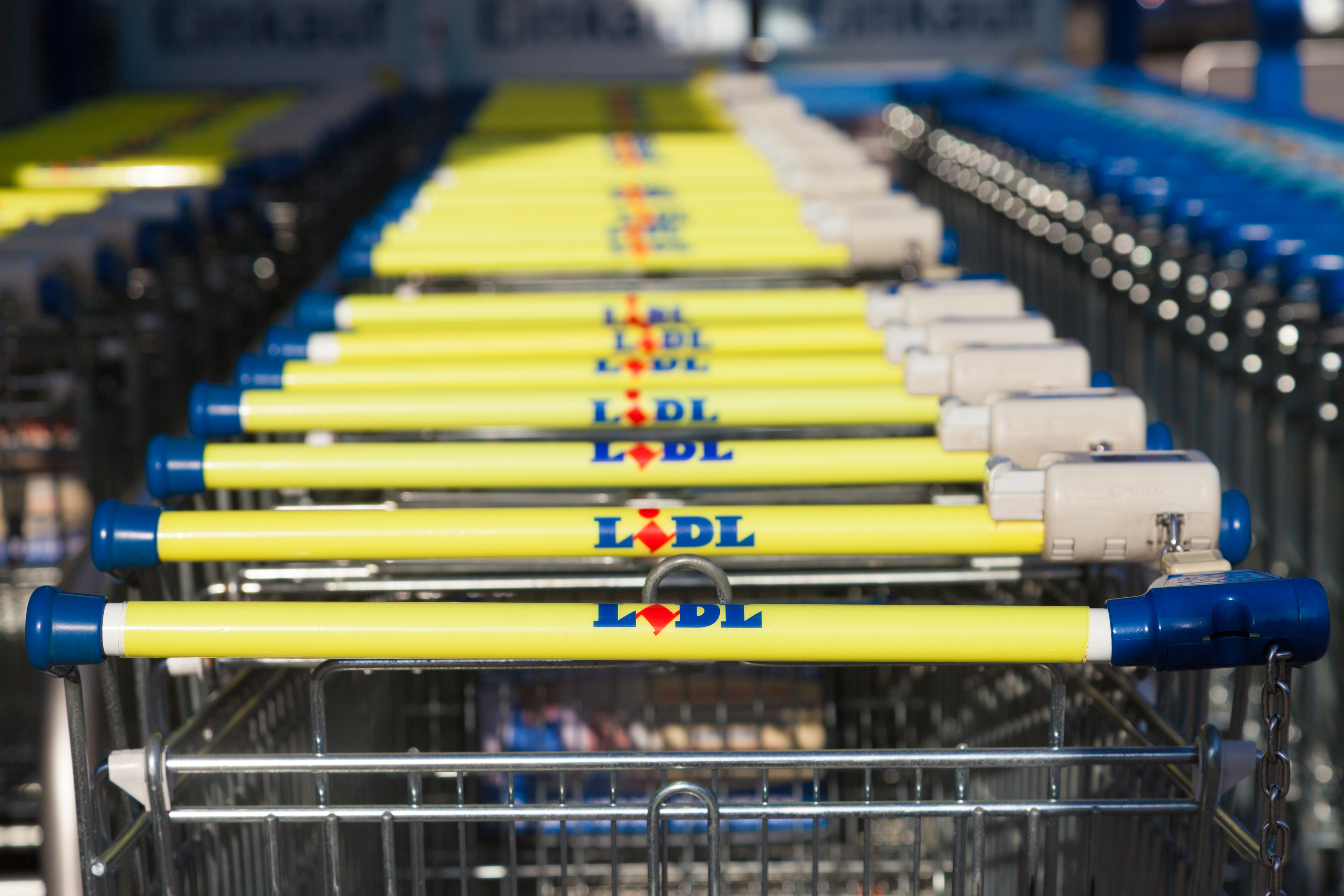
GERMAN discounters Lidl and Aldi shared the title of Britain’s fastest growing supermarket in the last three months of 2017, as the average household shrugged off economic worries to spend a record £1,054 on groceries, figures show.
Both retailers increased their sales by 16.8% compared with the same period the previous year, taking Aldi’s share of the entire UK grocery market to 6.8% from 6% a year earlier and Lidl’s to 5% from 4.4%, Kantar Worldpanel said.
Last week Aldi announced that total UK sales were more than 15% higher during December compared to the same month in 2016, pushing them over the £10 billion barrier for the first time.
Tesco was the fastest growing of the UK’s Big Four supermarkets over the 12 weeks to the end of December, with sales up 3.1%.
This is the fastest sales growth the retailer has seen since June, helped by a 6.4% increase in sales of its standard own label.
With Christmas Day falling on a Monday, Tesco Express branches, like other convenience stores, were able to benefit from restricted Sunday opening hours for larger supermarkets and were able to capitalise on consumers wanting to do their shopping closer to home immediately before the big day, Kantar said.
Its figures show that Britons spent £1 billion more than last year over the three months including Christmas.
Despite tightening household budgets, shoppers continued to trade up to more expensive options, with a record £469 million spent on premium own-label lines in December alone.
Shoppers parted with £747 million on December 22 alone, making the Friday before Christmas the busiest shopping day ever recorded.
Only 36% of spending was on items on offer this year – the lowest level of promotional activity at Christmas since 2009.
Like-for-like prices rose by 3.7% in the 12 weeks, a slight increase on the 3.6% rise reported last month.
Fraser McKevitt, head of retail and consumer insight at Kantar Worldpanel, said: “Overall supermarket sales increased in value by 3.8%, with an additional £1 billion ringing through the tills compared to the same festive period last year.
“In some ways Christmas is a tricky time for the discounters: they tend to lose a little market share compared to earlier in the year as many shoppers return to the more traditional supermarkets in search of old favourites.
“Rising to the challenge, Aldi and Lidl collectively managed to attract nearly one million additional households during the past three months.”
Despite a successful festive period, Tesco is still growing behind the market with a 0.2 percentage point fall in market share to 28%.
Asda’s sales increased by 2.2%, while Morrisons posted a 2.1% hike in sales, which it has attributed to resisting hiking prices despite surging costs.
Sainsbury’s sales grew by 2%, while Waitrose saw a 2.3% increase.
Meanwhile, analysts Nielsen said shoppers spent almost £500 million more on groceries this December than the last one.
Spending over the four weeks to December 30 hit £10.5 billion, a 3.7% year-on-year rise, Nielsen said, with grocery sales up 3.2% over the whole of 2017 on the previous year.
Mike Watkins, Nielsen’s UK head of retailer insight, said: “The supermarkets did well this Christmas, particularly amid fierce price competition and shoppers starting to feel the squeeze on disposable incomes.
“It was in stark contrast to many high street retailers who saw less footfall and sales declines.”

Enjoy the convenience of having The Sunday Post delivered as a digital ePaper straight to your smartphone, tablet or computer.
Subscribe for only £5.49 a month and enjoy all the benefits of the printed paper as a digital replica.
Subscribe